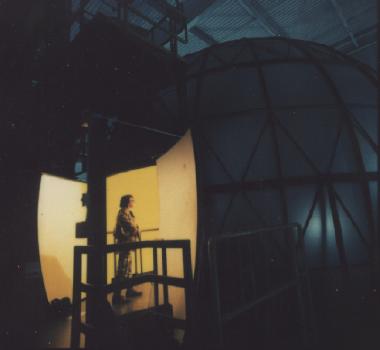
Entering one of WSSC's 28 foot domes...


If I had to pick my 'favorite' job that I ever worked on, this would have to be it... Challenging, ever changing (never boring), more fun than work (not that it wasn't hard work), this was the job I thought I would do till I retired. To me, it was a big video game; all that was missing was the quarter slot.

|
"I can neither confirm nor deny working on these flight programs..." |
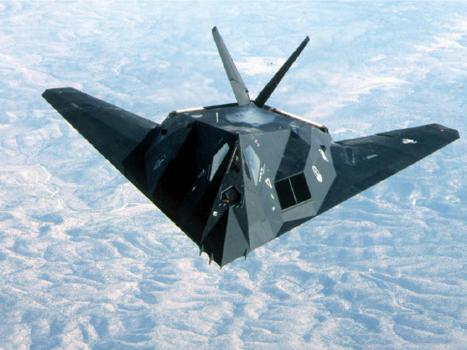
|
The Weapons Systems Simulation Center (WSSC) was Lockheed's West Coast Premier Flight Simulation Center. At the time [1987], it was the "premier developmental simulator in the world, both in concept and equipment". Although built primarily to support the Advanced Tactical Fighter (ATF/F-22) Program, many other Air-to-Air and Air-to-Ground projects were tested here.
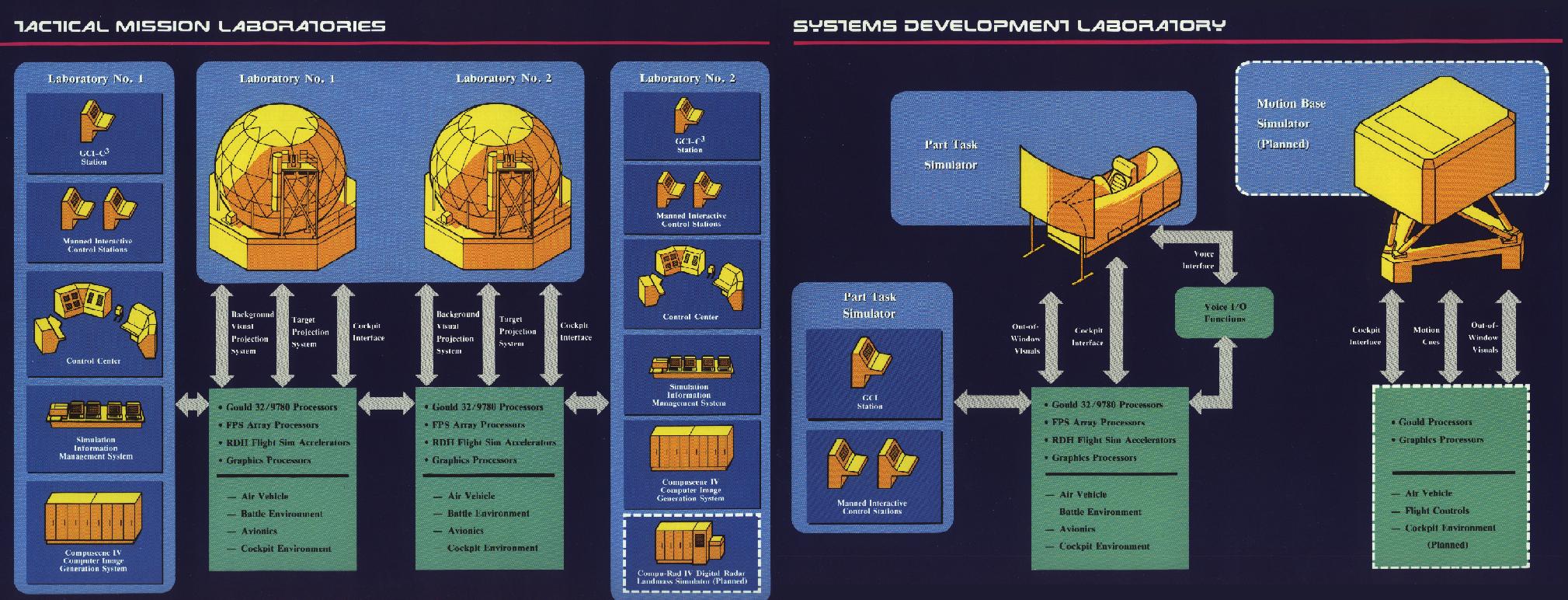
Tasks for WSSC included:
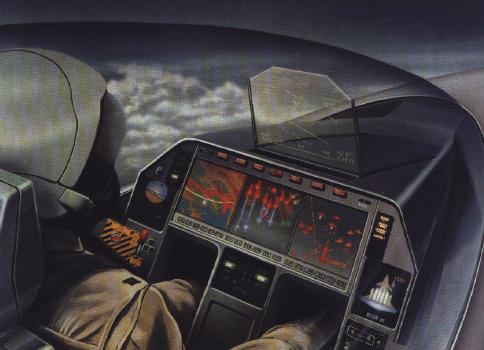
|
Two artists' concepts of cockpits... It was my job to take these designs, and turn them into reality in the simulators, or tell the designers what concepts were not practical. This could be as simple as taking a drawing off of a cocktail napkin to sitting in Pilot Vehicle Interface (PVI) meetings and lending my expertise in the design of the Design Documents. |
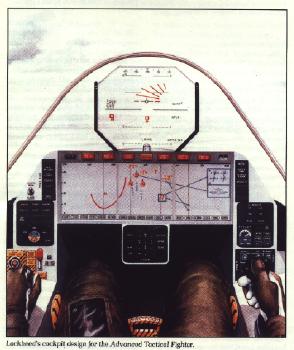
|
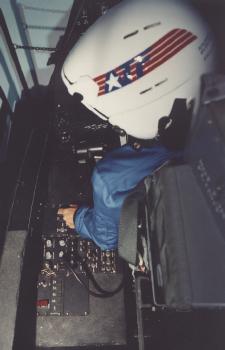
|
Every switch, button, and warning light in a cockpit needed code to connect it to the avionics, including the stick and throttle. As well as the Heads-Down cockpit displays, we designed and implemented a variety of Heads-Up Displays (HUDs). These varied from simple displays driven with raster graphics (using Evans & Sutherland PS350s) to actual flight hardware with special drivers. One of the most difficult pieces of software to work with in the SIM was the HUDs gun sights. Every lag in the system needed to be taken into account, so that what a pilot saw was accurately displayed as a gun kill or miss. |
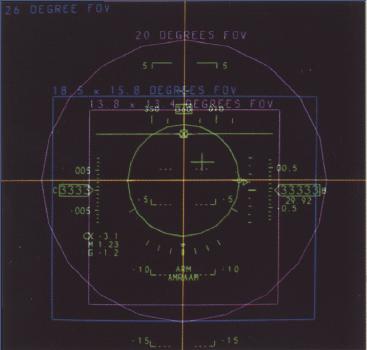
HUD Field-of-View (FOV) test |
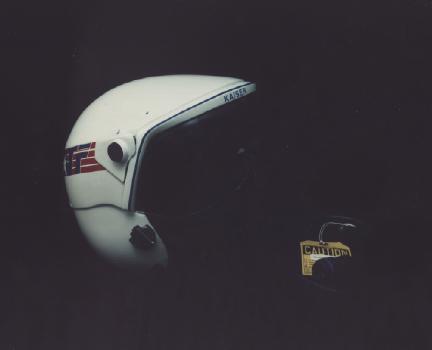
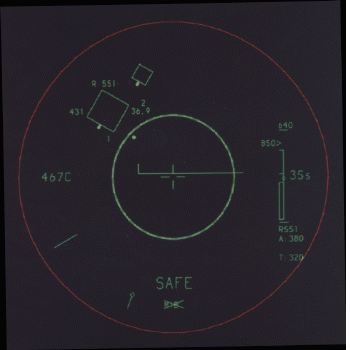
|
Another interesting piece of hardware I got to work with was the Kaiser Helmet Mounted Display (HMD). Not only did this need graphics code to drive it (using an E&S PS350 again), but it also needed code for the head tracker. Not only could the pilot use this to track targets or slave missiles, but also the display blanked when the pilot looked inside the cockpit. |
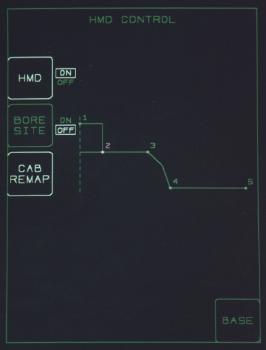
HMD Cockpit Mapping Display |
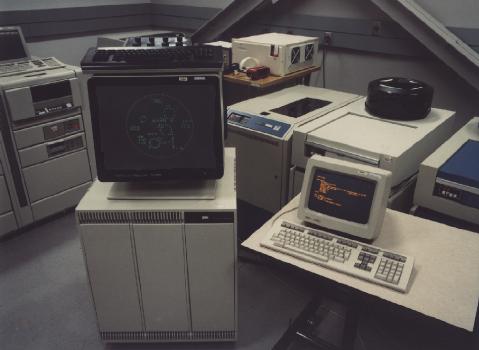
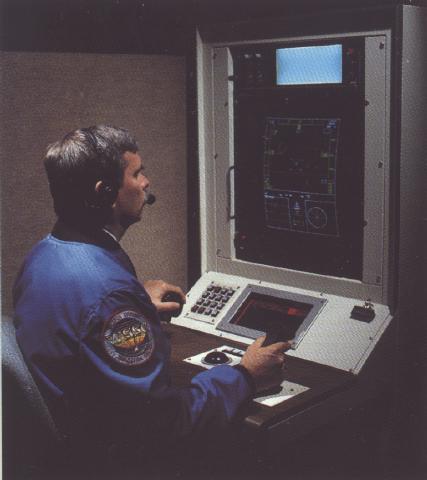
MIC Station |
As well as the two cockpits in the domes, WSSC had stations that could be manned and could take control of any other vehicle in the SIM. These Manned Interactive Control (MIC) Stations needed graphics that could simulate and control the various different vehicles that could be controlled. The PVI group (me) was in charge of the graphics for these stations. There were also stations to simulate Airborne Warning and Control System (AWACS) aircraft and Ground Control Stations that needed graphics. These systems all used stroke graphics and ran off of E&S PS350s. |
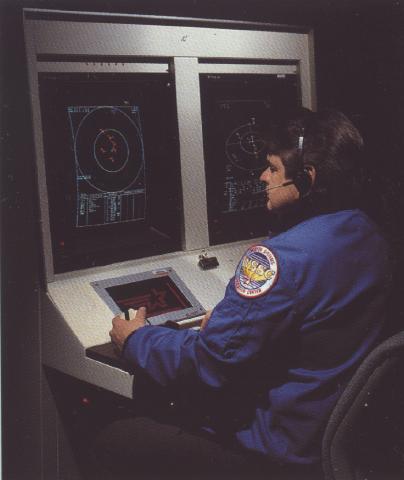
Command, Control, and Communications/Ground Control Intercept (C3/GCI) Console |
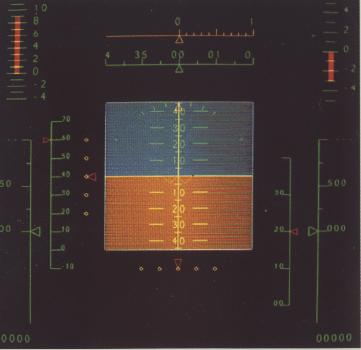
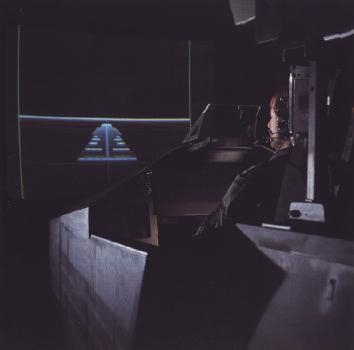
|
WSSC also supported experiments and studies that required only moderate resources. For these, custom Part Task Simulators were designed. These could be used for anything from display and PVI studies to Handling Quality studies to Failure Reaction studies. Since these used a screen rather than a dome for Out-the-Window visuals, the PVI group worked on these as well as anything needed for a specific cockpit PVI. |
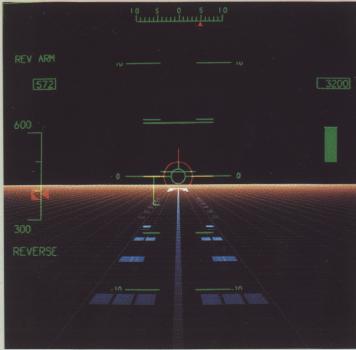
Short Take-Off and Landing (STOV/L) Out-the-Window Display |
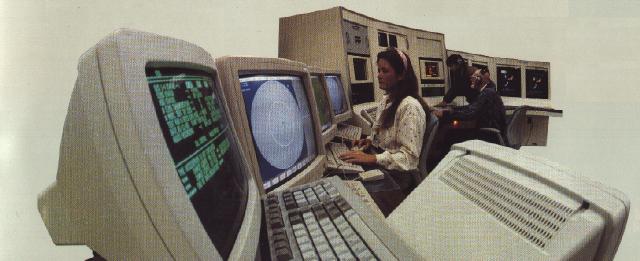
|
In between customers, we were always upgrading the systems. One that I inherited was the Simulation Information Management System (SIMS). This system had the ability to selectively monitor multiple aspects of the air battle engagement in real-time, or observe data that was recorded for post-simulation playback. I single-handedly upgraded this system to our Phase II configuration. This included adding and upgrading displays and Hardware, modifying the graphics drivers, modifying the communications software, and upgrading the recording software. |
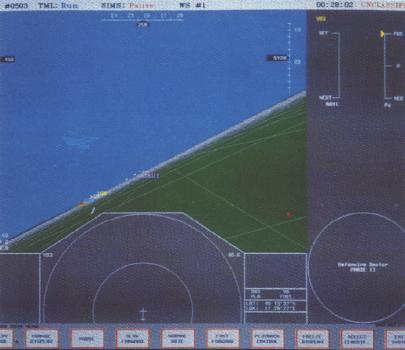
SIMS Pilot View Display |
| HOME | COMPANY INFORMATION | CONTACT INFORMATION | PORTFOLIO | RACING |